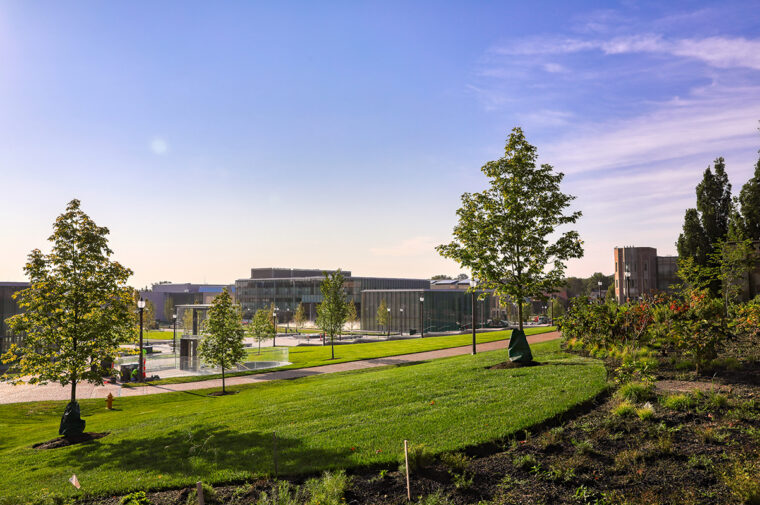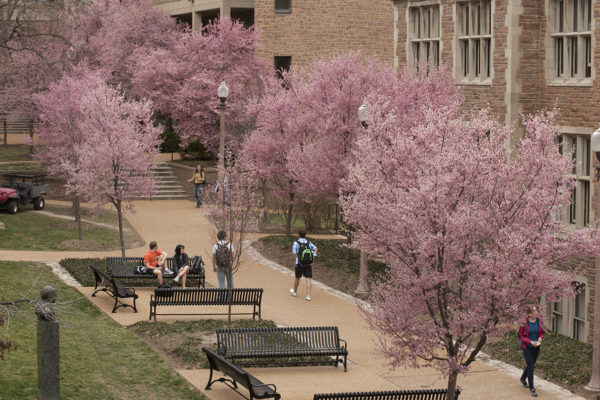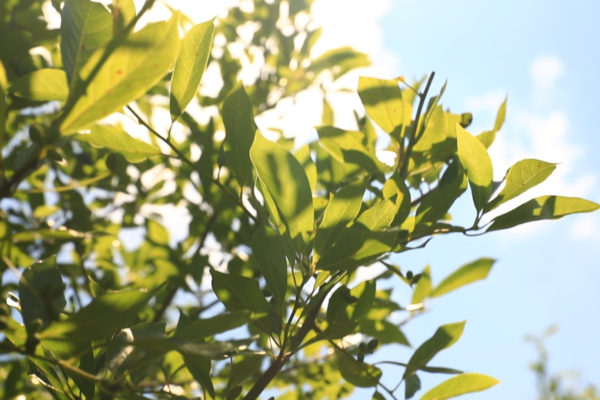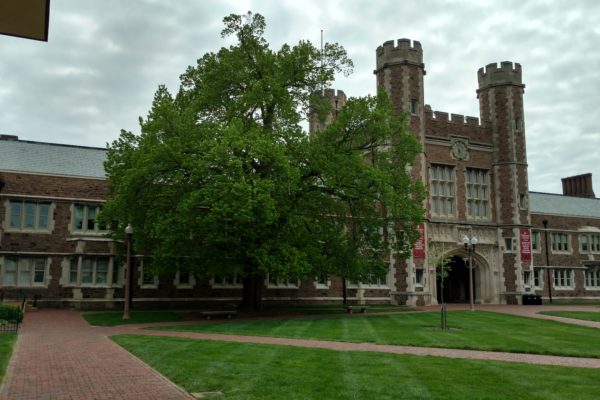About four years ago, Kent Theiling, grounds and landscape design manager, started to select the 250 trees that are now part of the east end of Washington University in St. Louis. He would arrive at dawn at Pea Ridge Forest, a nursery near Hermann, Mo., and walk row after row of oaks and maples, cypresses and elms, searching for trees with straight trunks and sound branch structures.
“You’ll look at a tree and visualize what needs to be done over the next five or 10 years to make sure it’s on its way,” said Theiling, who would be accompanied by representatives from Michael Vergason Landscape Architects, the landscape design team for the east end. “It’s one of the most enjoyable parts of the job.”
Theiling will introduce the university community to those trees during two 75-minute tours of the east end at 10 a.m. and 1:30 p.m. Oct. 31. The events are part of the Arbor Tour’s 10th anniversary celebration, which also includes a panel discussion about the university’s tree history and self-guided tours of campus trees Oct. 29. View a complete schedule of events.
Here, Theiling shares more about the tour and how the east end trees were selected.
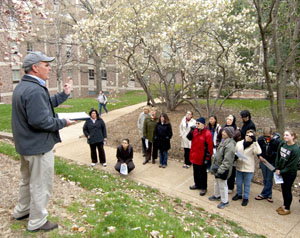
What has been planted on the east end?
We planted 250 trees this past spring and summer and will be planting another 20 or so this fall. They represent 33 different species, 29 of which are native or native cultivars. We also will have 3,000 shrubs of 12 species and 50,000 perennials of 46 species. And we will be planting some 25,000 bulbs that will be flowering in the spring. If you think the landscaping looks nice now, wait until next year. The whole area is just going to explode with new foliage and color as the landscape becomes more established.
How did you decide which species to plant?
One of the main things we have tried to do, not only on the east end but across campus, is select a diverse selection of trees to cushion ourselves from anything that might come down the road, whether that be an insect or a disease that targets a particular species. Knowing that the climate is warming, we’re also bringing some adaptable trees to campus that traditionally have grown in the South. We also picked trees that are beautiful and bring out the best of architecture of the buildings.
During your 11-year tenure, the university has been recognized as a Tree Campus USA since 2010 and has been awarded a Level 1 accreditation by the ArbNet Arboretum Accreditation Program. What has been the most satisfying part of the job?
The east end project has definitely been the most rewarding project of my 40-plus-year career. In 25, 50 years, these young trees will make up an allée on both sides of Brookings Hall. It will look different than the Oak Allée that we had before because this diverse array of native and native cultivars has different leaves and tree structures, but it will be something people will really enjoy.
